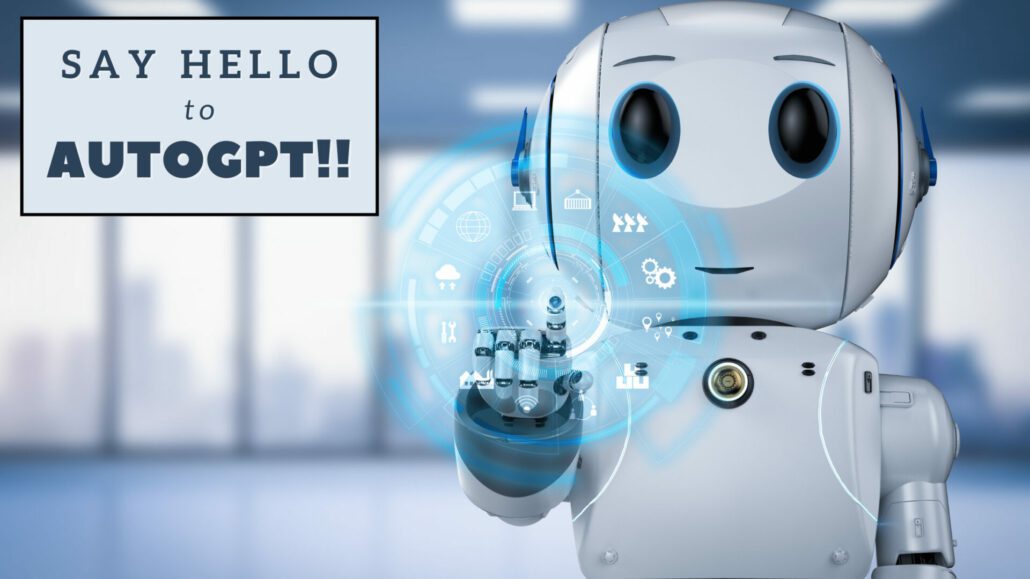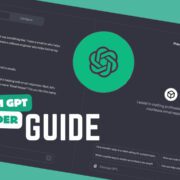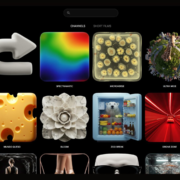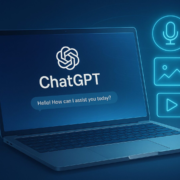How to Use AutoGPT: Why Do What AI Can Do For You?

Hey there, fellow tech enthusiasts! Today, we’re digging deep into the world of artificial intelligence (AI) to explore a fascinating tool known as AutoGPT. Whether you’re a seasoned AI expert or a curious newbie, this guide will help you understand and use this powerful tool effectively.
What is AutoGPT?
AutoGPT is an AI model developed by OpenAI. It’s part of the GPT (Generative Pretrained Transformer) family, which is known for its impressive language understanding and generation capabilities. But what sets this tool apart? Let’s find out!
The GPT Family: A Quick Overview
Before we get in too deep here, let’s take a quick detour to understand the GPT family. GPT models are designed to understand and generate human-like text. They’re trained on a wide range of internet text, which helps them generate diverse and creative outputs.
The GPT family includes several models, each more advanced than the last. GPT-4, the fourth iteration, is particularly noteworthy for its BILLIONS of machine learning parameters. This makes it one of the most powerful language models to date.
The Unique Twist: AutoGPT
So, where does our tool fit into the picture? AutoGPT brings a unique twist to the GPT family. It’s designed to be more autonomous, meaning it can learn and adapt without as much human intervention. This makes it a powerful tool for a variety of tasks, from writing articles to answering questions and more.
Why AutoGPT?
Now that we understand what AutoGPT is, let’s explore why it’s worth your attention. This AI model offers several benefits that make it a valuable tool for anyone interested in AI.
Enhanced Autonomy
As its name suggests, AutoGPT is designed for enhanced autonomy. This means it can learn and adapt to new tasks with less human intervention. This makes it a versatile tool that can handle a wide range of tasks.
Broad Applications
Thanks to its autonomy and language capabilities, AutoGPT can be used for a wide range of applications. From generating creative writing to coding assistance, this AI model can do it all. This makes it a valuable tool for individuals and businesses alike.
Continuous Learning
AutoGPT is designed to learn and improve over time. This means it can adapt to new tasks and challenges, making it a tool that grows with you.
Getting Started with AutoGPT
Ready to give AutoGPT a spin? Here’s a guide that will get you started step-by-step.
- Accessing AutoGPT: First, you’ll need to access the model. This can usually be done through the OpenAI website or API. You’ll need to create an account and possibly subscribe to a plan, depending on your usage needs.You can also check out this site for a fully web browser-based experience with no need for coding.
- Setting Up Your Task: Next, you’ll need to set up your task. This could be anything from writing a blog post to generating code. Be sure to specify your task clearly to get the best results. For example, if you’re asking the model to write a blog post, provide as much detail as possible about the topic, tone, and structure you want.
- Running AutoGPT: Once your task is set up, you can run the model. It will process your task and generate a response. This can take a few seconds to a few minutes, depending on the complexity of the task.
- Reviewing and Refining the Output: Finally, review the output from the model. If it’s not quite what you were hoping for, don’t worry! You can refine your task and run the model again. Remember, AutoGPT is a tool, and like any tool, it may take some practice to use effectively.
What can you do with AutoGPT
- Content Creation: It can generate blog posts, articles, and other forms of written content on a variety of topics.
- Code Generation: Given a specific task, AutoGPT can generate code snippets in various programming languages.
- Customer Service: It can be used to automate responses to customer inquiries, providing quick and accurate information.
- Language Translation: It can translate text between different languages, aiding in communication across language barriers.
- Creative Writing: From poetry to short stories, AutoGPT can generate creative writing pieces.
- Educational Material: It can create educational content, such as lesson summaries, study guides, or quiz questions.
- Email Drafting: It can help draft emails, saving time and effort in professional communication.
- Social Media Posts: It can generate engaging posts for various social media platforms.
- Product Descriptions: It can write detailed and enticing product descriptions for e-commerce websites.
- Data Analysis: Given a dataset, AutoGPT can generate a report analyzing the data and highlighting key insights.
Use Case Scenarios for AutoGPT
- Content Marketing: Generate SEO-optimized blog posts for clients’ websites.
- Education: Create study materials or generate quiz questions for students.
- E-commerce: Write product descriptions that highlight features and benefits.
- Customer Support: Automate customer support responses.
- Software Development: Generate code snippets to speed up the development process.
- Language Learning: Create translation exercises for language learning apps.
- Social Media Management: Generate engaging posts to increase online presence.
Tips for Using AutoGPT Effectively
Just like any tool, AutoGPT can be more effective when used correctly. Here are some tips to help you get the most out of this AI model:
- Be Specific: The more specific your task, the better the results you’ll get from AutoGPT. So, be clear and detailed when setting up your task. For example, instead of asking AutoGPT to “write a blog post,” ask it to “write a 500-word blog post about the benefits of indoor gardening in a conversational tone.”
- Experiment: Don’t be afraid to experiment with different tasks and settings. This can help you learn more about the capabilities and limitations of AutoGPT. Try using it for different tasks, like writing emails, generating code, or even creating poetry!
- Review and Refine: Always review the output from AutoGPT and refine your task as needed. This can help you achieve the results you’re looking for. Remember, this is a learning model, so the more you use it, the better it can become at understanding your tasks and preferences.
The Future of AutoGPT
As AI continues to evolve, so too will AutoGPT. OpenAI is constantly working on updates and improvements to make AutoGPT even more powerful and versatile. So, what can we expect from the future?
While it’s hard to predict exactly what the future holds, we can expect to see AutoGPT becoming even more autonomous and capable. We might also see more customization options, allowing users to tailor AutoGPT’s behavior to their specific needs. And as AI becomes more integrated into our daily lives, we can expect to see AutoGPT and similar models playing a bigger role in everything from content creation to customer service and beyond.
Wrapping Up
AutoGPT is a powerful AI tool with a wide range of applications. By understanding how it works and how to use it effectively, you can unlock its full potential. So, why not give it a try? What it can do will amaze you!
Remember, this is just a starting point. The AI world is waiting to be explored. So, keep learning, keep experimenting, and most importantly, have fun on your AI journey!
Tony has a bachelor’s degree from the University of Phoenix and over 14 years of writing experience between multiple publications in the tech, photography, lifestyle, and deal industries.











Leave a Reply
Want to join the discussion?Feel free to contribute!